According to Wikipedia, a Hydrogrossular is …
” … a calcium aluminium garnet series (formula: Ca3Al2(SiO4)3−x(OH)4x, with hydroxide (OH) partially replacing silica (SiO4)). Hydrogrossular is translucent to opaque, and found in green to bluish green, pink, white, and grey.
Yep, explains absolutely nothing to me either!
I did read that Hydrogrossular is sometimes grown in with idocrase which is one of those “gems” listed on the sign post at Gemstone Beach. As the name suggests, Hydroglossular contains some water and it polishes up well apparently. Te Ara, the Encyclopedia of New Zealand references (and has a great image as well) Hydrogrossular being found at Orepuki. When you look at the image you can see just how many different types of Hydrogrossular can be found there! Pale green Hydrogrossular are known to take a good polish and have been used for jewellery. Hydrogrossular stones, being heavy and exceptionally hard, were used by Southland Māori as hammer stones for the making of stone implements.
In 1943 mineralogist Colin Hutton gave the name hydrogrossular to a calcium-rich variety of garnet that is the main constituent of the rock rodingite, also named from New Zealand. As the name indicates, it contains some water. Recent research has shown that most of what was previously described as grossular garnet contains some water, and is better described as hydrogrossular.
Hydrogrossular ranges from yellowish brown to pale green. Rounded pebbles are found on some Southland beaches, and it has been used for carving.
Simon Nathan, ‘Rock and mineral names’, Te Ara – the Encyclopedia of New Zealand, http://www.TeAra.govt.nz/en/rock-and-mineral-names/print (accessed 9 April 2023)
Spotting Hydrogrossular
Up until this day (Fossick #4 with JP on Sunday 9 April) I have been no good at spotting Hydrogrossular at all! Fossick #3 had JP picking up (and generously giving me) quite a handful of them! Check out what JP found here! Today, however, was my day for Hydrogrossular spotting! I think my brain and eyesight finally twigged to the dull look!
Hydrogrossular is quite dull to the eye as it waits patiently to be spotted amongst the stones and when you pick it up, it has this very waxy, smooth feel to it. I think the easiest ones to spot are the white looking ones although, if you’re like me, you can easily mistake white quartz stones for hydrogrossular and the pale green ones.
I also read on Te Ara that Chalcedony (pronounced kal-sed-on-ee) is a waxy, translucent form of quartz with crystals so fine that they can only be seen under a microscope. It forms when water percolates in cracks and cavities – often formed by gas bubbles in volcanic rocks. Over time, the water deposits small amounts of silica in the cavities. I’m wondering if that’s why I often mistake the quartz for hydrogrossular? (I also learnt that jasper are opaque forms of silica that are usually formed as bands or nodules in sedimentary rocks.)
Gosh it really is no wonder that identifying stones/rocks is quite difficult and not at all simple by any stretch of the imagination!
Fossick #4 with JP
I am particularly curious to see how the pale green hydrogrossular (Top image, 2nd stone down on the left hand side) polishes as well as the slight pink one underneath it. I didn’t quite get the light right for this photo because it really doesn’t reflect the actual colours seen with the naked eye.
In the image next to my finds are the stones found by JP and kindly given to me to polish. (I remembered to keep them separate so that I could photograph them!) The bluish one on the left is a hydrogrossular and I can’t wait to see how that turns out too! I’m pretty sure there’s a few other smaller hydrogrossulars in that handful too.
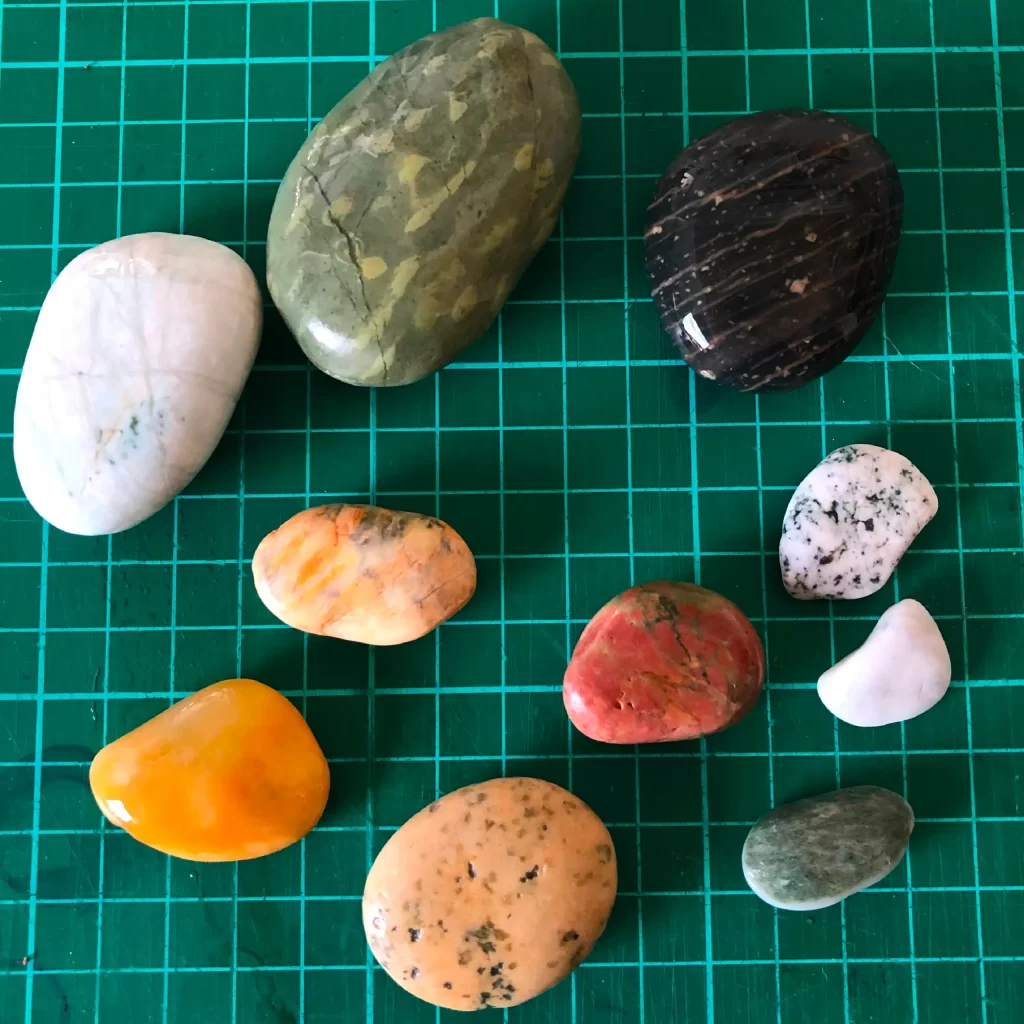
I was definitely more “selective” today in what I picked up and kept during Fossick #4! I think JP’s influence has encouraged me to be ok with leaving stones on the beach plus I’ve realised that it is also ok to pick up a stone, admire it (cos it did catch your eye after all) and then let it return to where it came from. I’m not quite as selective as JP yet but I am getting better!

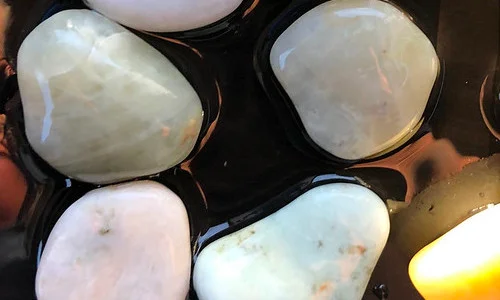

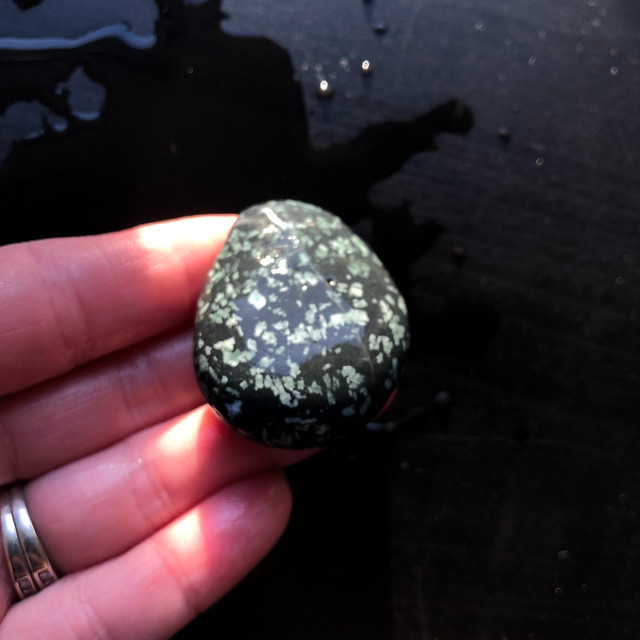
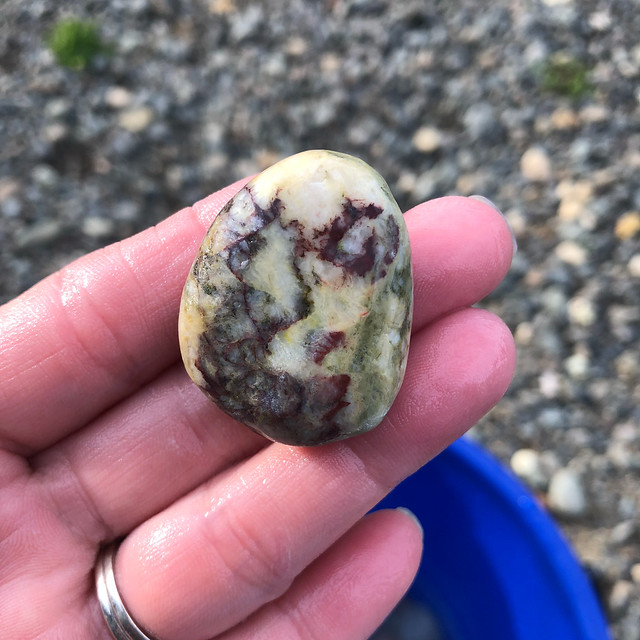
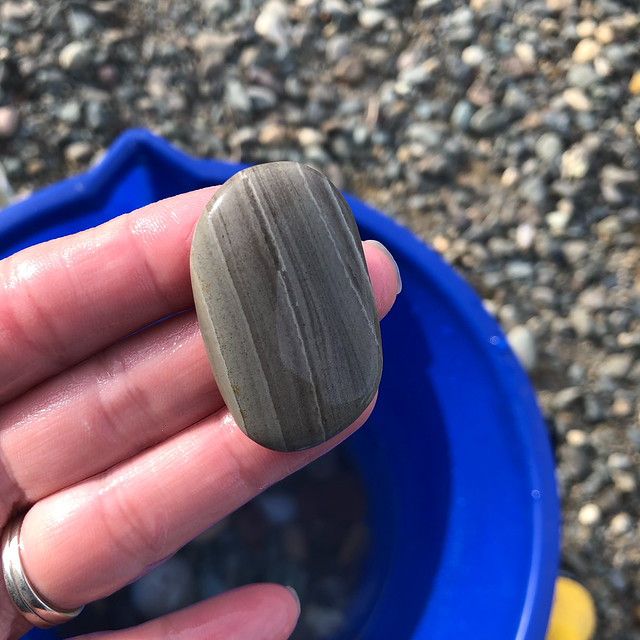
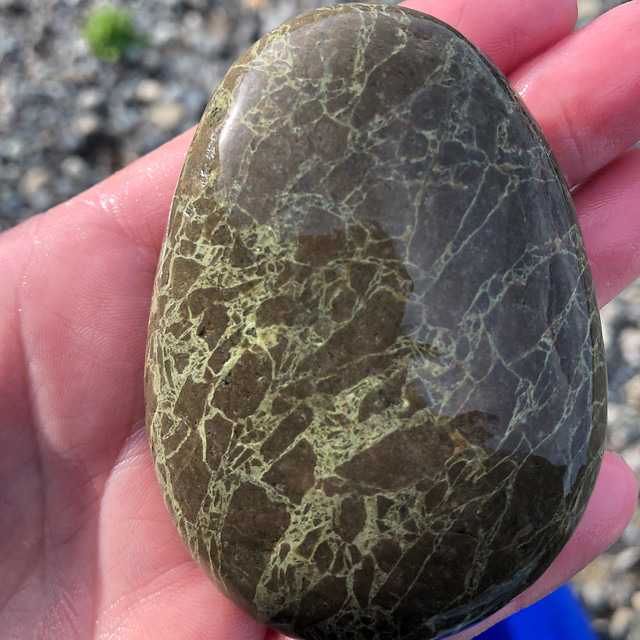

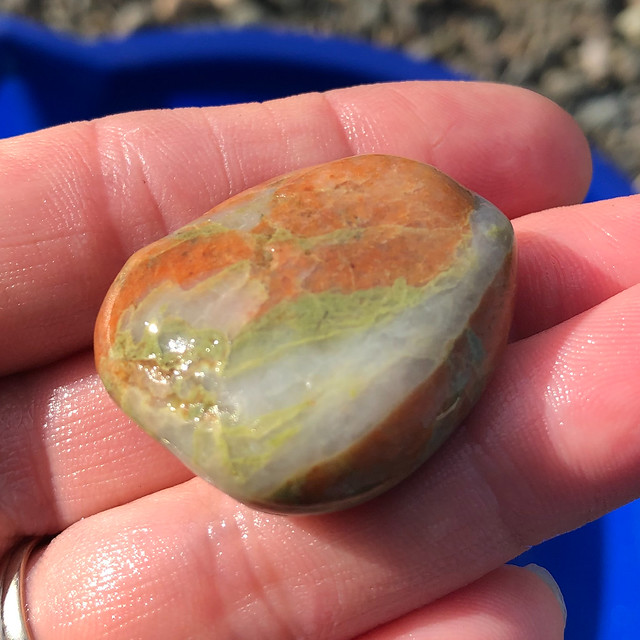
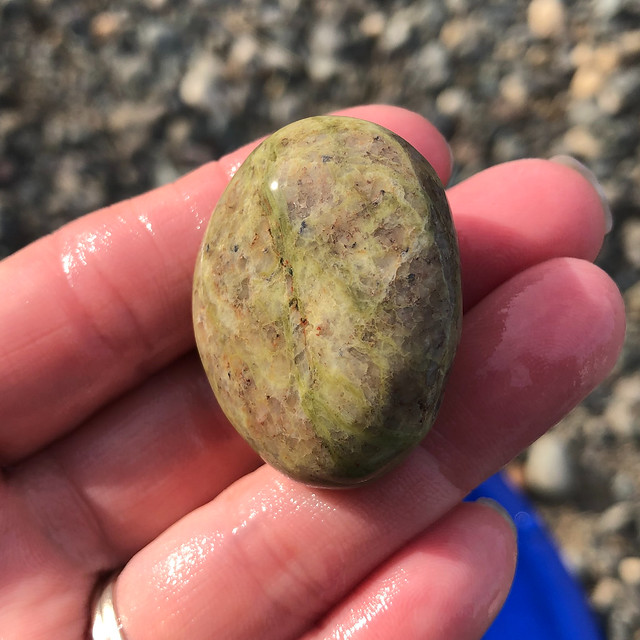

3 Replies to “A Gemstone Beach Hydrogrossular Day”